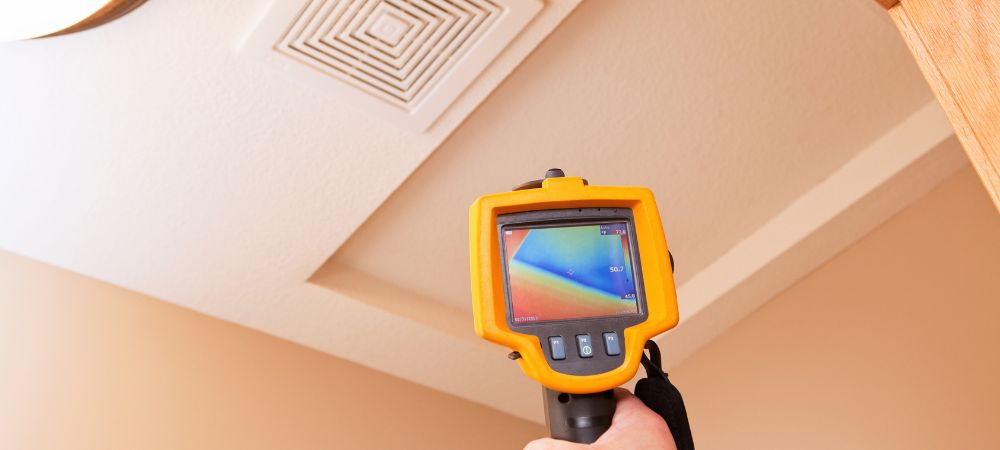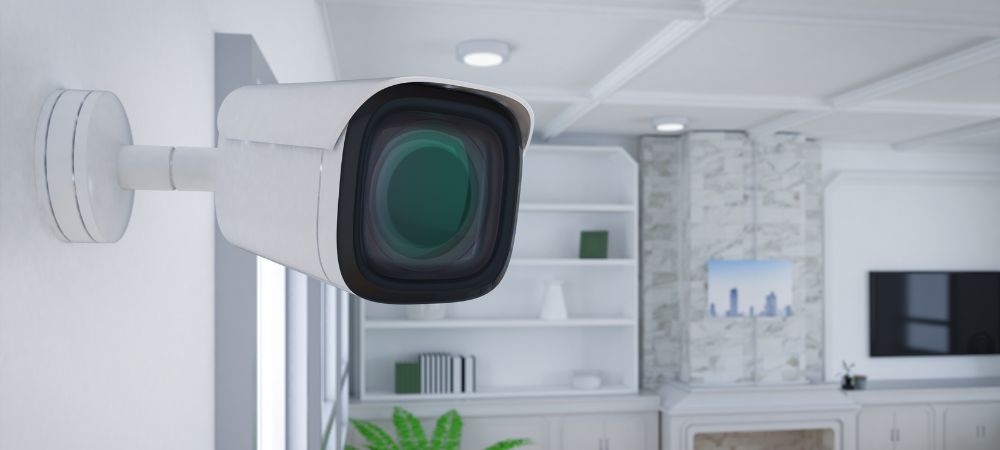Thermal Imaging vs. Standard Indoor Security Solutions: Pros and Cons

In indoor smart security camera, the choice between thermal imaging and standard security solutions presents a pivotal decision for property owners and security professionals. Both options offer unique advantages and drawbacks, catering to diverse needs and environments. This article will delve into the comparative analysis of thermal imaging and standard indoor security solutions, examining their strengths and limitations.
Linking words establishes a cohesive narrative by connecting ideas and concepts, guiding the reader through exploring these two distinct approaches to indoor security. Through this comparative exploration, we aim to provide clarity for individuals seeking to enhance the safety and surveillance of indoor spaces.
Thermal Imaging:

Pros:
- Enhanced Detection:
Thermal imaging can detect heat signatures, allowing it to identify intruders even in low light or complete darkness such as flir thermal imaging camera, fluke thermal imaging camera.
- No Lighting Dependency:
Unlike standard cameras, which rely on visible light, thermal imaging works regardless of lighting conditions, just as the nanny cams making it effective day or night.
- Wide Coverage:
Thermal imagers can cover larger areas because they can detect heat signatures over a distance.
- Reduced False Alarms:
Thermal imaging is less prone to false alarms triggered by the movement of non-human objects like pets or blowing debris.
- Weather Resistance:
Thermal imaging affects weather conditions such as fog, rain, or snow, ensuring consistent performance in adverse environments.
- Reliance on Lighting:
Standard security cameras depend on adequate lighting conditions for optimal performance, which can limit their effectiveness in low-light or nighttime scenarios.
- Vulnerability to Tampering:
Standard security cameras may be susceptible to vandalism or tampering, compromising functionality and effectiveness.
- Limited Field of View:
Some standard security cameras have a limited field of view, requiring multiple cameras to cover larger areas effectively.
- Privacy Concerns:
Deploying standard security cameras may raise privacy concerns, especially in areas where individuals expect privacy, such as homes or restrooms.
Cons:
- Cost:
Thermal imaging cameras tend to be more expensive than standard security cameras, making them a higher initial investment.
- Limited Detail:
Thermal imaging doesn't provide the level of detail that standard cameras do, making it less effective for identifying specific features or objects.
- Warm-Up Time:
Some thermal imagers require a warm-up period before they can function optimally, which could delay response time in urgent situations.
- Interference:
Certain environmental factors, such as extreme heat sources or reflective surfaces, can interfere with thermal imaging accuracy
- Integration Challenges:
Integrating thermal imaging with existing security systems may require additional hardware or software, potentially complicating setup and maintenance.
- Limited Identification:
Thermal imaging may not provide detailed facial recognition or identification of specific individuals, making it less suitable for certain security applications.
- Susceptible to Environmental Factors:
Extreme temperatures or reflective surfaces can affect the accuracy of thermal imaging, leading to false positives or missed detections.
- Expensive Maintenance:
Thermal imaging cameras may require specialized maintenance and calibration, which adds to their overall cost of ownership.
- Limited Range in Extreme Conditions:
In extreme cold conditions, thermal imaging may have reduced range and effectiveness, impacting its reliability in certain environments.
Standard Indoor Security Solutions:

Pros:
High Resolution:
Standard indoor security cameras typically offer higher resolution images and video, enabling clearer identification of individuals or objects.
Cost-Effectiveness:
Standard security cameras are generally more affordable than thermal imaging cameras, making them accessible for a wider range of budgets.
Remote Monitoring:
Many standard security cameras offer remote monitoring capabilities, allowing users to view live feeds and receive alerts from anywhere with an internet connection.
Easy Integration:
Standard security cameras often integrate seamlessly with other smart home or security systems, simplifying setup and operation.
Detailed Footage:
Standard cameras capture detailed footage with color and visual clarity, aiding identification and evidence collection.
Reliance on Lighting:
Standard security cameras depend on adequate lighting conditions for optimal performance, which can limit their effectiveness in low-light or nighttime scenarios.
Vulnerable to Tampering:
Standard security cameras may be susceptible to vandalism or tampering, compromising their functionality and effectiveness.
Limited Field of View:
Some standard security cameras have a limited field of view, requiring multiple cameras to cover larger areas effectively.
Privacy Concerns:
Deploying standard security cameras may raise privacy concerns, especially in areas where individuals expect privacy, such as homes or restrooms.
Cons:
Light Dependency:
Standard security cameras rely on visible light, making them less effective in low light conditions or complete darkness without additional lighting.
False Alarms:
Standard cameras can be triggered by the movement of non-threatening objects like pets or foliage, leading to false alarms.
Weather Vulnerability:
Outdoor standard cameras may be susceptible to weather damage or interference, affecting performance during adverse conditions.
Limited Coverage:
Standard cameras may have a limited coverage range compared to thermal imaging, requiring more cameras to cover the same area effectively.
Privacy Concerns:
Standard security cameras may raise privacy concerns, especially if used in private or sensitive areas without proper consent or notification.
Reliance on Lighting:
Standard security cameras depend on adequate lighting conditions for optimal performance, which can limit their effectiveness in low-light or nighttime scenarios.
Vulnerable to Tampering:
Standard security cameras may be susceptible to vandalism or tampering, compromising their functionality and effectiveness.
Limited Field of View:
Some standard security cameras have a limited field of view, requiring multiple cameras to cover larger areas effectively.
Privacy Concerns:
Deploying standard security cameras may raise privacy concerns, especially in areas where individuals expect privacy, such as homes or restrooms.
Conclusion:-
In summary, while thermal imaging excels in certain scenarios, like low-light conditions and wide-area coverage, standard indoor security solutions offer higher resolution and cost-effectiveness. Both options present trade-offs in terms of capabilities and limitations.For more information and to explore the best options for your needs, visit Zetronix.
FAQs
1. What is thermal imaging, and how does it differ from standard indoor security solutions?
Thermal imaging utilizes infrared technology to detect heat signatures, allowing it to capture images based on temperature differences. In contrast, standard indoor security solutions rely on visible light to capture photos and video footage.
2. What are the primary advantages of thermal imaging over standard indoor security solutions?
Thermal imaging offers enhanced detection capabilities, especially in low light or complete darkness. It is not dependent on lighting conditions and can cover larger areas. Additionally, thermal imaging is less prone to false alarms triggered by non-human movement.
3. What are the main drawbacks of thermal imaging compared to standard indoor security solutions?
Thermal imaging tends to be more costly than standard security cameras and may need more provided by high-resolution standard cameras. It can also have a warm-up time and may be susceptible to interference from environmental factors.
4. What are the primary advantages of standard indoor security solutions over thermal imaging?
Standard indoor security solutions typically offer higher-resolution images and video, enabling clearer identification of individuals or objects. They are also more cost-effective, easier to integrate with existing systems, and may offer remote monitoring capabilities.
5. What factors should be considered when deciding between thermal imaging and standard indoor security solutions?
Factors to consider include the specific security needs of the environment, budget constraints, lighting conditions, desired level of detail in surveillance footage, and integration with existing security systems.
6. Can thermal imaging and standard indoor security solutions be used together?
Yes, in some cases, a combination of thermal imaging and standard security cameras may offer comprehensive coverage and enhanced security. Integrating both technologies can provide a multi-layered approach to surveillance, effectively addressing different security challenges.
7. Are there any privacy concerns associated with thermal imaging or standard indoor security solutions?
Both thermal imaging and standard security solutions may raise privacy concerns, particularly regarding collecting and monitoring sensitive information or private spaces. It is essential to adhere to relevant privacy regulations and obtain consent when deploying surveillance systems in residential or commercial settings.




